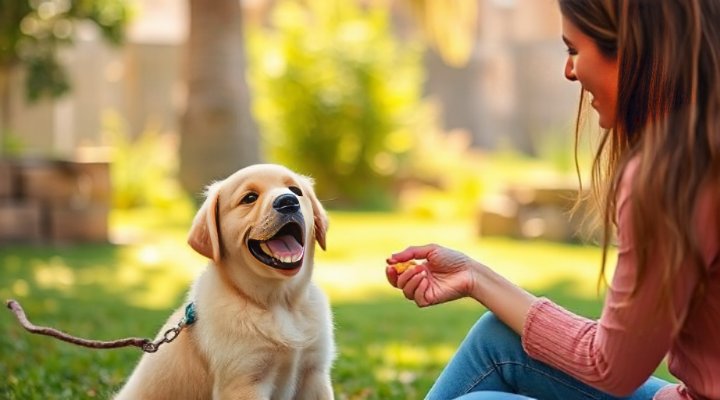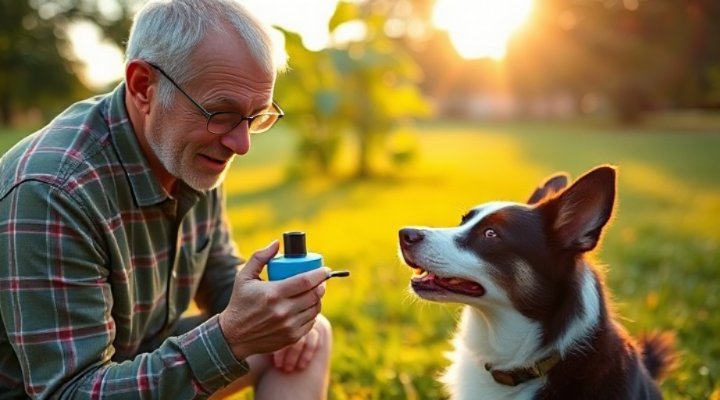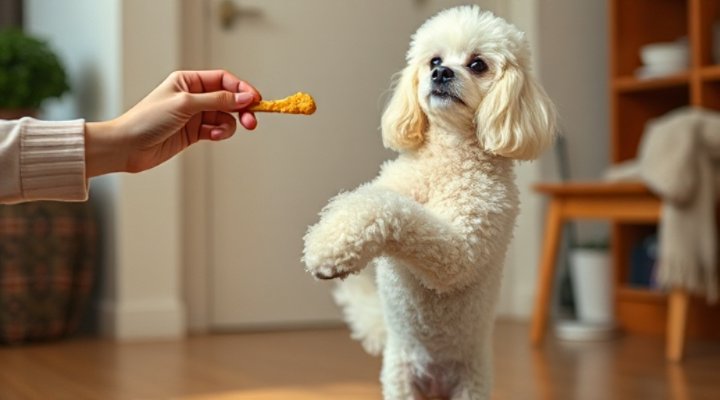Positive reinforcement dog training techniques have revolutionized how we build relationships with our canine companions. Unlike outdated punishment-based methods, positive reinforcement focuses on rewarding desired behaviors, creating a joyful learning experience for both dog and owner. In this comprehensive guide, we’ll explore seven scientifically-backed techniques that can transform your dog’s behavior while strengthening your bond.

1. Clicker Training: The Precision Tool for Behavior Shaping
Clicker training is one of the most effective positive reinforcement dog training techniques, using a small device that makes a distinct clicking sound to mark the exact moment your dog performs the desired behavior. The click acts as a bridge between the behavior and the reward, providing clear communication. Start by ‘charging’ the clicker – clicking and immediately giving a treat several times until your dog associates the sound with positive outcomes.
For example, when teaching ‘sit’, click the moment your dog’s bottom touches the ground, then follow with a treat. This method is particularly useful for complex behaviors that need precise timing. Many professional trainers recommend clicker training as it eliminates confusion and speeds up the learning process.

2. Luring: Guiding Your Dog into Position
Luring uses treats or toys to guide your dog into desired positions or movements. Hold a treat close to your dog’s nose, then slowly move it in the direction you want them to go. For a ‘down’ command, move the treat from their nose toward the ground between their paws. The key is to fade the lure quickly – after a few successful repetitions, begin using just your empty hand motion, then reward from your other hand.
This positive reinforcement technique works exceptionally well for basic obedience commands and is a cornerstone of puppy training. Remember to always reward after the behavior is completed, not during the lure phase, to avoid creating treat-dependent behaviors.
3. Capturing: Reinforcing Natural Behaviors
Capturing involves rewarding behaviors your dog offers naturally. Keep treats handy and when you see your dog doing something you like (sitting quietly, lying down, making eye contact), immediately mark it with a verbal ‘yes!’ or click, then reward. This positive reinforcement method is excellent for teaching calm behaviors or reinforcing good manners without formal training sessions.
According to the American Veterinary Society of Animal Behavior, capturing is particularly effective for shy or sensitive dogs who might find more structured training intimidating. It’s also a great way to bond with rescue dogs as you learn to appreciate their natural behaviors.

4. Shaping: Building Complex Behaviors Step by Step
Shaping breaks down complex behaviors into tiny achievable steps, rewarding each successive approximation toward the final goal. For instance, to teach ‘roll over’, you might first reward for a head turn, then for shoulder movement, then for partial rolls, until finally achieving the complete behavior. This positive reinforcement technique requires patience but produces remarkable results.
As noted in our previous article on positive reinforcement, shaping works best when you clearly define your criteria for each step and only move forward when your dog is consistently successful at the current level. This method is ideal for teaching tricks or preparing for dog sports.
5. Targeting: Teaching Specific Body Part Awareness
Targeting teaches your dog to touch a specific body part (usually nose or paw) to an object like your hand or a target stick. Start by presenting your flat palm close to your dog’s nose – when they sniff or touch it, mark and reward. Gradually increase distance and add cues. Targeting has practical applications from guiding movement to helping fearful dogs approach new objects confidently.
The American Kennel Club recommends targeting as one of the most versatile positive reinforcement dog training techniques, useful for everything from basic obedience to assisting dogs with special needs. It’s also a great way to mentally stimulate high-energy breeds.

6. Differential Reinforcement: Encouraging Better Choices
Differential reinforcement involves rewarding more desirable behaviors while ignoring less desirable ones. For example, if your dog jumps for attention, reward only when all four paws are on the ground. This positive reinforcement method teaches your dog to offer polite behaviors automatically. It’s particularly effective for addressing nuisance behaviors without confrontation.
As we discussed in our article on behavior modification, this technique requires consistency but creates lasting change. The key is identifying what behavior you want to reinforce instead of the unwanted one, and being ready to reward it immediately.
7. Premack Principle: Using Natural Rewards
The Premack Principle states that more probable behaviors can reinforce less probable ones. In dog training terms, you can use activities your dog loves (like going for a walk or playing fetch) as rewards for completing less exciting tasks. For example, ask for a ‘sit’ before throwing the ball. This positive reinforcement technique taps into your dog’s natural motivations.
This method works exceptionally well for high-energy dogs and can be combined with other techniques from our best dog training methods guide. The key is identifying what your dog truly values and using it strategically to reinforce desired behaviors.

Implementing Positive Reinforcement in Daily Life
Successful positive reinforcement dog training techniques rely on consistency, proper timing, and understanding your individual dog’s motivations. Remember to:
- Keep training sessions short (5-10 minutes) and frequent
- Use high-value rewards for difficult tasks
- Gradually phase out food rewards as behaviors become reliable
- Always end on a positive note
- Incorporate training into daily routines
Positive reinforcement isn’t just about treats – it’s about building communication, trust, and a joyful partnership with your dog. By focusing on what your dog does right rather than punishing mistakes, you’ll create a confident, well-behaved companion eager to learn and please.
For more specialized training advice, check out our guide to behavior correction commands or our resources for at-home training.
